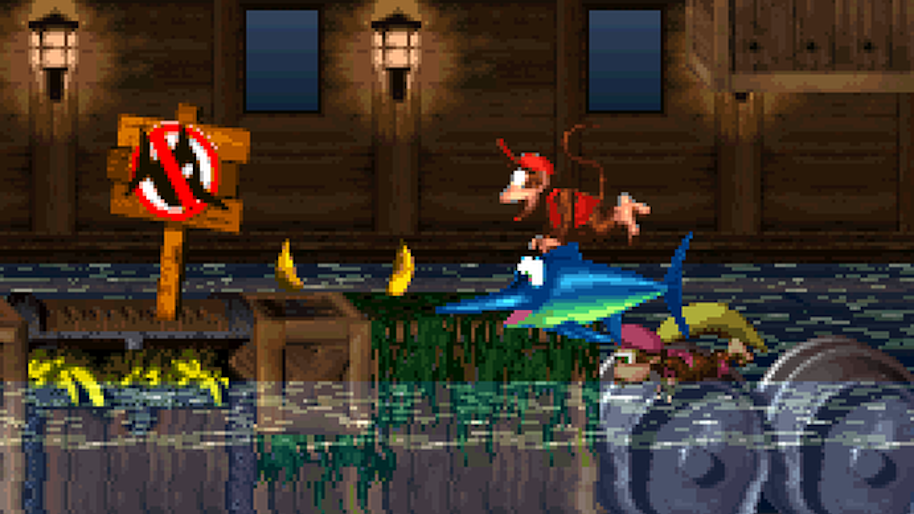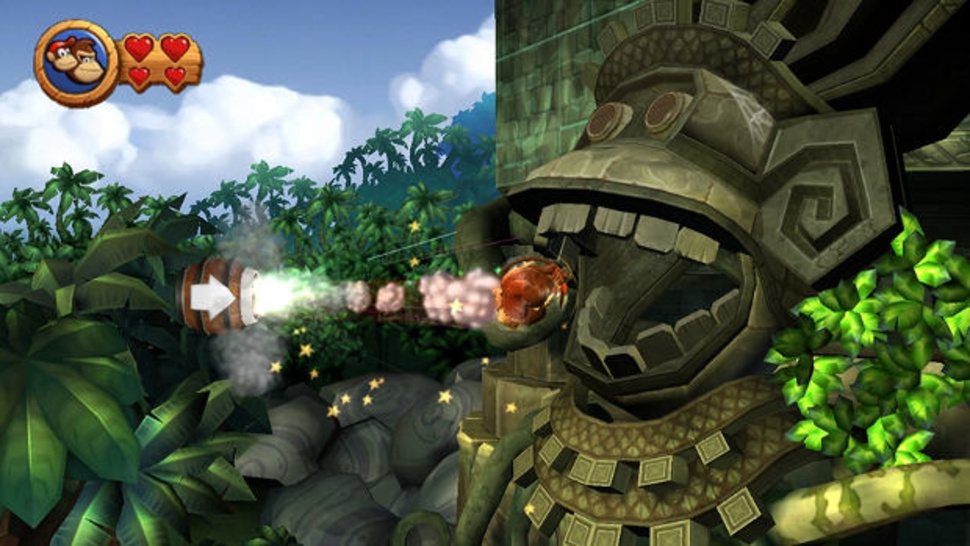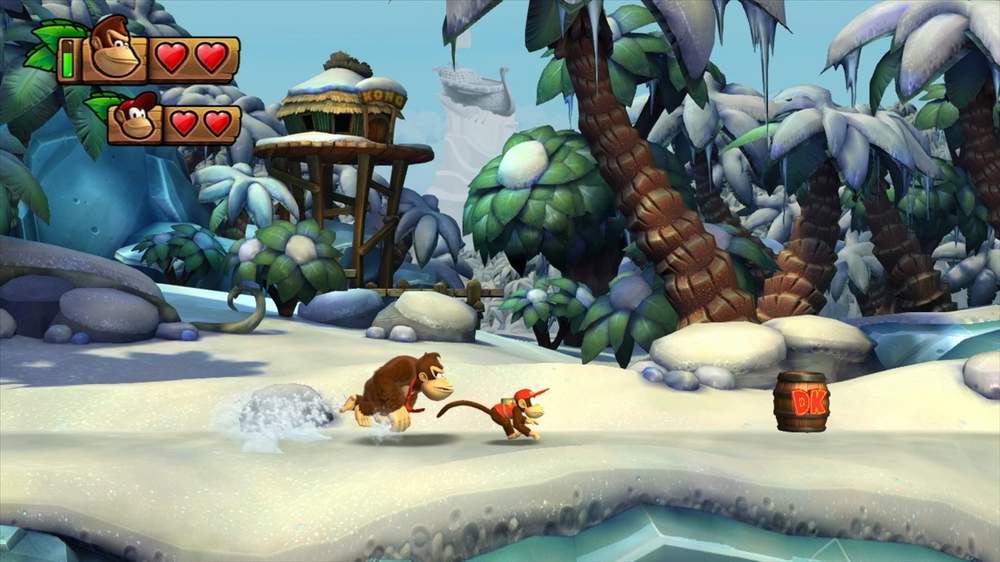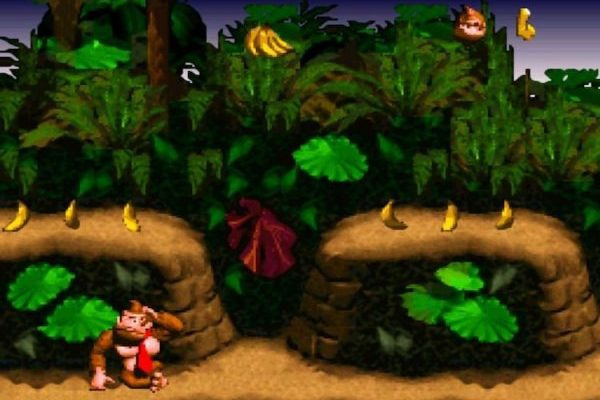Originally a villain in the classic 1981 arcade game of the same name, Donkey Kong has had a wild ride throughout gaming history. The roles were reversed in Donkey Kong Jr. as it had his son trying to save his father, who had been successfully captured by Mario. His current incarnation is a tie-wearing primate that loves bananas. This redesign came from British developer Rare, whose Donkey Kong Country series saw the character see a resurgence in popularity during the 90s.
It’s now been 25 years since the original Donkey Kong Country released in 1994. The game forever changed Mario canon as it showed that the original villainous Donkey Kong was an old man named Cranky Kong, while his son was the banana-loving ape that fans have come to know and love. It also introduced a whole cast of Kong characters that have made plenty of appearances in other Nintendo titles since then. The original series ended in 1999 with Donkey Kong 64, but it made a triumphant return on the Wii. We’ve now been treated to two great DKC games this decade (in addition to rereleases of the original titles), and it’s unlikely there will be another 11-year wait between games. As the series turns 25 years old, let’s take a look at its fantastic history and why it is so important to gaming.
Cover Photo: Nintendo
Laugh it up: Funny Gaming Memes of the Week
Gaming with a message: Indie Puzzle Creator Goes Hard on Wealth Inequality Commentary, Adds a Dash of Humor
Follow Mandatory on Facebook, Twitter, and Instagram.
Donkey Kong Country
-
'Donkey Kong Country'

After the release of Donkey Kong 3 in 1986, Donkey Kong had faded into the background of Nintendo stars. He'd occasionally have a small appearance like in 1992's Super Mario Kart, but otherwise he was no longer a starring character. That all changed in 1994 as British developer Rare gave the ape his own platforming adventure.
While still a 2D platformer, it was very different from Nintendo's own Super Mario Bros. series. Rather than focusing on finishing levels quickly, it encouraged players to explore every nook and cranny in order to collect bananas, coins and special letters. It was also one of the first games to use pre-rendered 3D graphics on the Super Nintendo, and it wowed players as a result. The game was instantly a hit with players, and while there were rumors that Donkey Kong creator Shigeru Miyamoto was unhappy with the game, he has since dismissed such claims and stated that he was in daily communication with Rare despite not overseeing production.
Photo: Nintendo
-
'Donkey Kong Country 2': Diddy's Kong Quest

A sequel arrived just one year later, and it wasn't simply more of the same. Despite it being called Donkey Kong Country, Donkey Kong had been kidnapped and it was up to Diddy Kong (who was a sidekick in the original) to team up with his girlfriend Dixie and save his friend. Rare had also learned quite a bit from the original as the level design was much more fun in the sequel, and the locales were even more bright and colorful. Even 20-plus years later, it remains one of the graphical highlights of the 16-bit era.
Photo: Nintendo
-
'Donkey Kong Country 3': Dixie Kong's Double Trouble!

There's an old saying that "if it ain't broke, don't fix it," and that's what Rare applied to the third entry. Released in 1996, this entry saw both Donkey Kong and Diddy kidnapped by the evil King K. Rool. Now it was up to Dixie and Kiddy Kong to rescue their friends. It isn't quite as memorable as the first two titles, but it was a solid end to one of the Super Nintendo's best trilogies. The fact that Rare was able to put out three great platformers in three years is quite the accomplishment.
Photo: Nintendo
-
'Donkey Kong Land'

In 1995, 1996, and 1997, Rare put out simplified versions of the DKC games on the Game Boy. Called Donkey Kong Land, each title mirrored its respective SNES game. The original featured Donkey Kong and Diddy, the sequel featured Diddy and Dixie, and so on. However, these were just ports. They featured new level layouts despite being similar to console games. They made the transition from console to handheld shockingly well, and it was an impressive technical achievement at the time, even if it's not much of a looker in 2019.
Photo: Nintendo
-
'Donkey Kong 64'

On the N64, Rare wound up becoming even more popular due to their highly-regarded Banjo-Kazooie 3D platformers. Naturally, they followed them up with a 3D game starring Donkey Kong. The result was 1999's Donkey Kong 64, which wound up being a huge hit for everyone involved. The game was absolutely massive with four playable characters and required an Expansion Pak to be played. Sadly, it has aged really poorly as it highlights the worst parts of the games that are now referred to as "collectathons." There's simply too much to collect without much consequence, and with each character needing to find their own collectibles, it was definitely overkill.
Photo: Nintendo
-
'Donkey Kong Country Returns'

After Rare was sold to Microsoft, it looked like we would never see the Donkey Kong Country series again. However, Retro Studios decided to bring the franchise back on the Wii. Released in 2010, Donkey Kong Country Returns is an incredibly faithful reboot of the series starring Donkey Kong and Diddy. It even manages to outdo the originals in terms of level design, as it features some of the best boss fights and stylish levels of the entire series.
It was later ported to the Nintendo 3DS in 2013 by Monster Games. This version includes an easy mode, stereoscopic 3D graphics, and a new world.
Photo: Nintendo
-
'Donkey Kong Country: Tropical Freeze'

The most recent game in the series was also done by Retro. Called Donkey Kong Country: Tropical Freeze, it saw Donkey Kong having to battle Viking penguins called the Snowmads. It had a unique locale due to the tropical islands being covered in snow due to an ice dragon, and threw in two additional characters: Dixie Kong and the cane-using Cranky Kong. It was a huge critical success and was one of the Wii U's most popular titles.
Last year, the 2014 release was ported to Nintendo Switch with a new easier Funky Kong mode, which allowed players to use the super-powerful Funky Kong to get through levels.
Photo: Nintendo




